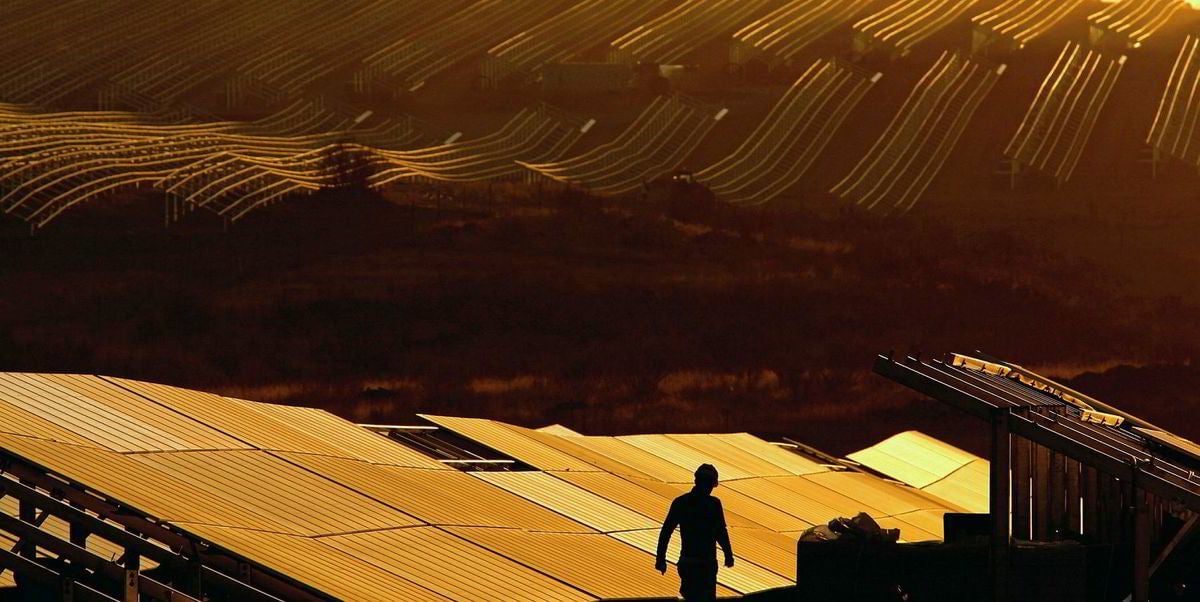Solar energy is so cheap that it can be wasted
It’s time to start wasting solar energy.


It’s time to start wasting solar energy.
That was the surprising conclusion Marc Perez, a doctoral student in engineering at Columbia University, arrived at in 2014. Perez was trying to design the world’s cheapest electricity grid. By using a decade of satellite data to calculate solar power potential across the globe, he designed the optimal grid for producing the most power at the lowest cost.
Perez found overproduction was not a problem. Unlike a coal or natural gas plant, renewable fuel is free. And switching off a solar panel’s output could be done electronically, compared to the expensive process of spinning down a turbine. “Wasting” the energy carried few costs.
The solution, he argued in his doctoral thesis, was to overbuild and use surplus solar energy to top off the grid, rather than storing most of that extra energy or keeping solar farms small to avoid overproduction. The strategy could theoretically lower the cost of electricity by as much as 75%.
“The least-cost solution always leads to some overbuilding,” says Richard Perez, Marc’s father and a senior research associate at the University at Albany who has since collaborated on his son’s research. “You will always need storage to get you through the night. You will just need less.”
The cost of installing solar
Accepting overproduction is a foreign concept to power producers, who have spent decades shaving off every dollar to optimize power plant costs over time. After US regulators began deregulating certain electricity markets in the 1970s, power producers suddenly found themselves competing on the wholesale market. Every dollar spent on a new coal, gas, or nuclear plant meant higher electricity costs over time to pay off all that concrete and steel.
Solar has flipped that equation. In the past decade, solar module prices plummeted more than 90%, according to energy research firm Wood Mackenzie. Meanwhile, the cost to build conventional plants for fossil fuels such as coal rose by 11%. Solar panels have become so cheap that the true cost of electricity is shifting from solar arrays themselves to the steel and land needed to house them. Imagine if the most expensive part of a nuclear plant wasn’t the fuel or reactor, but just the land it sits on.
That shift means it’s now cheaper to overbuild, even if producers don’t always sell the power. With the price of panels set to continue falling over the next decade, the economics will only grow even more compelling.
Last year, the Perezes co-published an article in the peer-reviewed journal Solar Energy showing the United States could operate a solar-dominated grid furnishing a constant source of electricity even cheaper than today’s conventional production, using limited wind power and energy storage. The low cost overcame a traditional weakness for renewable energy sources: the intermittency of supply if the sun or wind fails to appear. Oversizing a system by a factor of three, they found, was optimal.
Why hasn’t this approach caught on among energy planners? “Inertial thinking,” argues the elder Perez. “Until two years ago, nobody stepped outside the box…but two years from now, it will be so obvious.”
Supersize me
A carbon-free grid is now official policy in 14 US states, the European Union, and China. The best way to achieve this remains the subject of fierce debate.
Yet private developers are already realizing the new economics of solar behind the Perezes’ theory. Each year, solar farms are being built with more capacity than they can ever store or deliver. When fuel is free, and hardware is cheap for producers, any hardware and construction costs are eclipsed by improved reliability and greater productivity on cloudy days, says Ravi Manghani, head of solar research for Wood Mackenzie.
“Solar is too cheap to meter essentially,” Manghani says. “Costs are going down so rapidly, and are expected to keep going down for the next decade, that developers are building bigger solar projects.”
This discrepancy, known as the inverter load ratio, means solar farms are now routinely built to produce at least 130% more than they can output to the grid. For example, a solar farm capable of generating 100 MW of direct current (DC) may be paired with an 80 MW inverter, an electric device connected to the grid that converts this energy to alternating current (AC) for transmission. The rest is curtailed during peak production, or stored.
The resulting AC/DC ratio is a measure of just how “overbuilt” solar facilities are becoming. A decade ago, says Manghani, these inverter ratios might have been 1.1. Today, 1.3 is the norm. And that’s rising rapidly.
Two recent projects show just how much. Last year, the 49 MW Tobacco Valley Solar in Connecticut began operation with a 1.84 inverter ratio (meaning it produces 84% more electricity than its connection to the grid can output during peak production). North of Los Angeles, the 700 MW Eland solar and battery storage project approved last year boasts 74% more capacity than it can supply to the grid. The developer, 8minute Solar Energy, is now planning a second project for 2021 in Nevada capable of generating electricity which is nearly three times more than its inverter rating (a ratio of 2.91).
Ultimately, it’s unlikely all this excess solar capacity will stay untapped forever. Energy storage technologies are evolving quickly. Batteries are getting cheaper. A hydrogen economy is emerging to turn those extra electrons into liquid fuels.
One thing is unlikely to change: Every year, the falling cost of solar will incentivize developers to build even bigger.